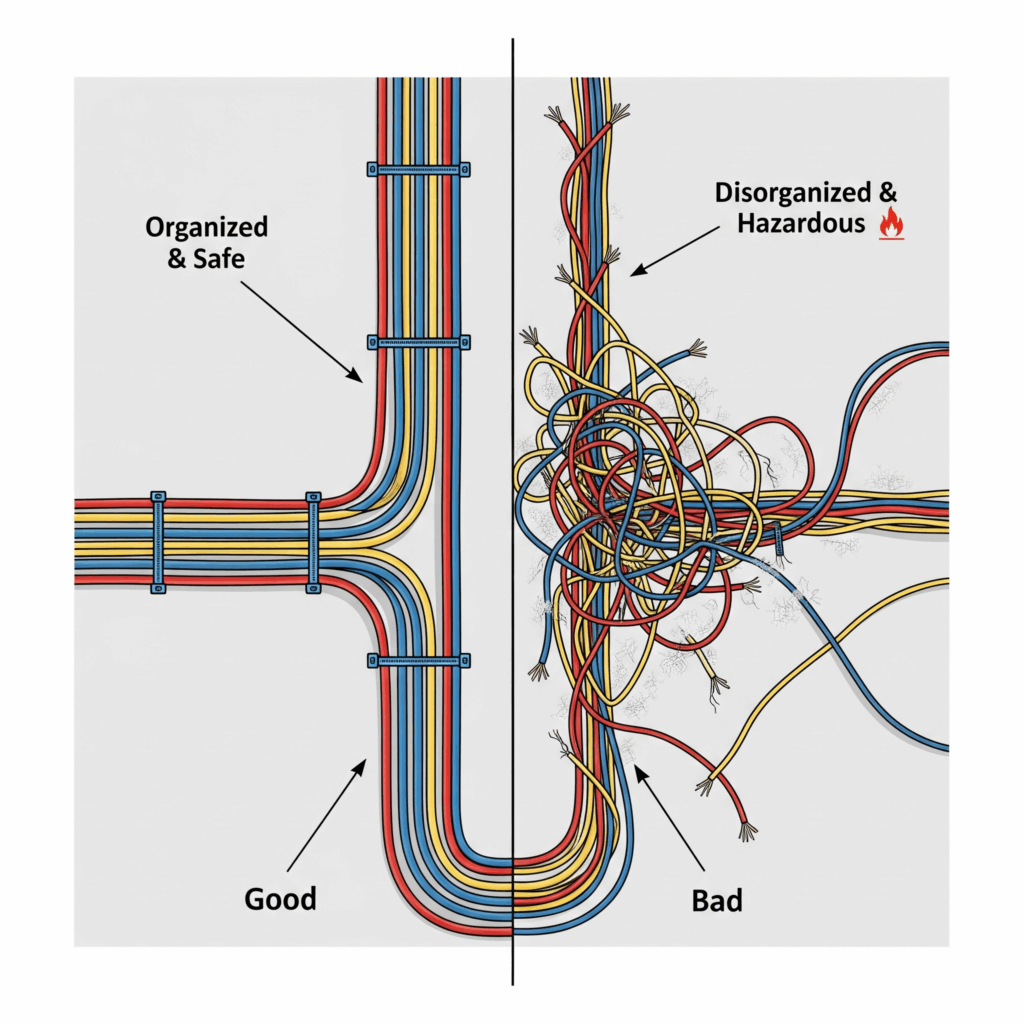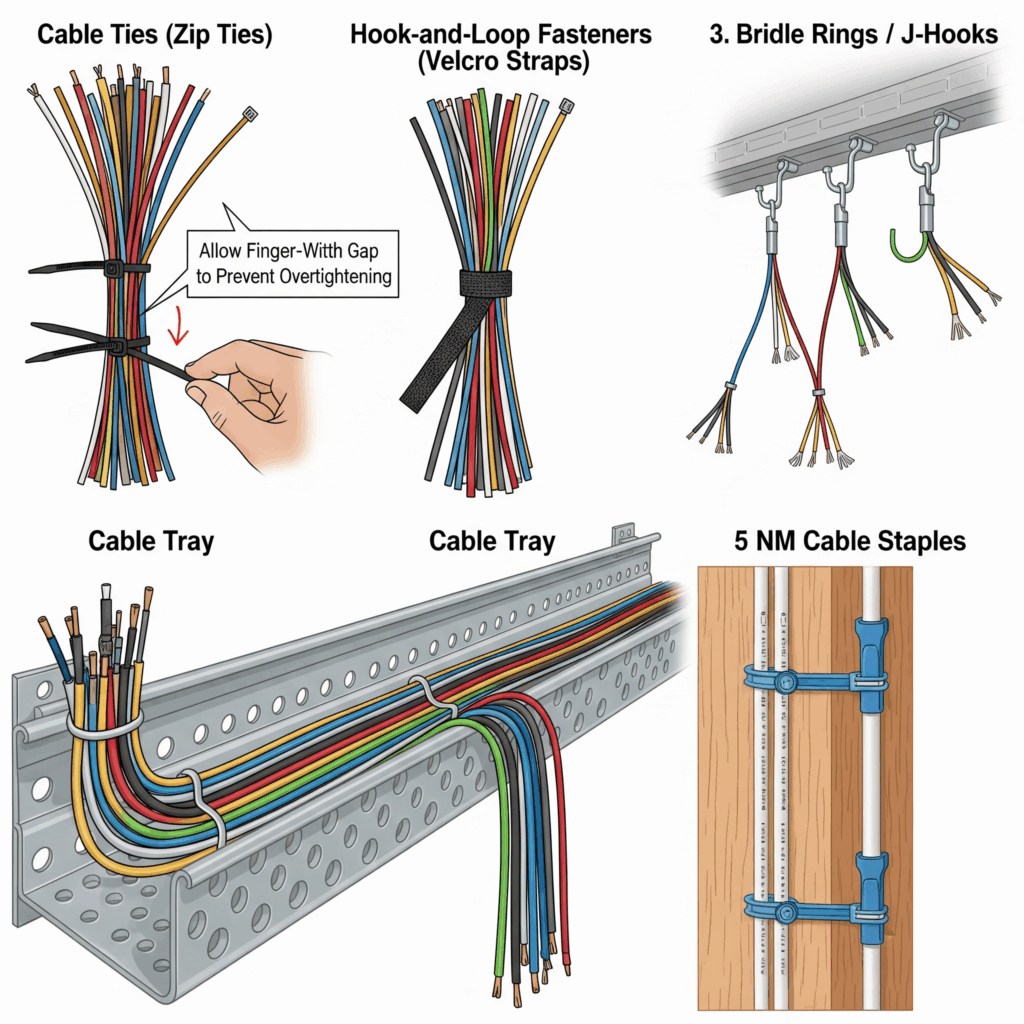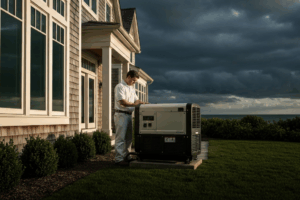How Should Electrical Cables Be Tied?
Introduction
Proper cable tying and management are critical for safe, compliant, and maintainable electrical installations. Beyond aesthetics, organized wiring ensures safety, longevity, and serviceability, aligning with NFPA 70 (National Electrical Code, NEC) standards. Improper practices risk heat buildup, insulation damage, and difficult maintenance, leading to hazards or code violations. This guide details professional cable management techniques, NEC requirements, and safety protocols for electricians.

Why Cable Management Matters
Effective cable management mitigates serious risks:
- Heat Buildup: Tightly bundled cables reduce airflow, raising temperatures and degrading insulation, potentially causing fires. This ties to wire ampacity chart principles, as bundling reduces current-carrying capacity (NEC 310.15(B)(3)(a)).
- Physical Damage: Overtightening or improper routing damages insulation, risking short circuits or ground faults (NEC 300.4).
- Serviceability: Disorganized cables complicate troubleshooting, increasing repair time and safety risks.
- Code Compliance: NEC 300.11 and 300.4 mandate proper securing and protection to ensure inspectable, safe installations.
Proper management enhances system reliability and simplifies future modifications, reflecting professional expertise.
Mastering Cable Tying for Safe Electrical Systems
Using NEC-compliant cable tying techniques prevents hazards and ensures safe electrical systems. By adhering to NFPA 70, electricians create organized, maintainable installations that meet code and protect occupants.
Professional Methods for Tying Cables
Professional cable tying requires selecting the right tools and methods for the application, per NEC 300.11 (securing/supporting) and 300.4 (protection):
Cable Ties: Secure cables without overtightening; a finger should fit under the tie to avoid insulation damage. Use flush-cut tools to prevent sharp edges (NEC 300.4). UV-resistant ties are required for outdoor use (NEC 300.5).
Hook-and-Loop Fasteners: Reusable and gentle, ideal for data or communication cables (NEC 800.24). They prevent over-cinching and simplify modifications.
Bridle Rings/J-Hooks: Support cables from ceilings or beams, maintaining bend radius (NEC 300.4(F)). Use for high-volume runs in commercial settings.
Cable Trays: Provide structured pathways for large cable bundles, ensuring airflow and accessibility (NEC 392). Common in industrial installations.
Staples/Clips: Secure NM cables (e.g., Romex) to studs, spaced per NEC 334.30 to prevent strain.

For example, in a residential panel, neatly tied NM cables with staples ensure accessibility to receptacles and junction boxes (NEC 314.29), while commercial data centers use trays and J-hooks for organized, inspectable runs.
Ensuring Compliance with NEC Cable Management Standards
Adhering to NFPA 70 ensures compliant cable management, reducing risks and ensuring inspect ability. Key NEC requirements include:
- Securing: Cables must be supported every 4.5 feet for NM cables or 6 feet for MC cables (NEC 330.30, 334.30).
- Bend Radius: Maintain minimum bend radii to prevent conductor damage (e.g., 5x diameter for NM cables, NEC 300.34).
- Protection: Route cables away from sharp edges or use protective sleeves (NEC 300.4).
Safety Protocols
- De-energize: Verify circuits are off with voltage testers; use lock-out/tag-out (LOTO) (NFPA 70E 120.2, 120.5).
- Accessibility: Ensure junction boxes and receptacles are accessible per NEC Article 100 and 314.29.
- Clean Workspace: Organized cables reduce tripping hazards (NFPA 70E 130.7(G)).
- PPE: Wear insulated gloves and safety glasses when handling cables near live systems (NFPA 70E 130.7).
Conclusion
Cable tying is a critical skill for safe, reliable electrical systems. By using proper methods, adhering to NFPA 70 (NEC 300.4, 300.11) and NFPA 70E, and prioritizing safety, electricians ensure compliant, maintainable installations that protect users and equipment.
Take the next step in your professional growth! Visit Expert CE (https://expertce.com/) for all your continuing education needs.
Continuing Education by State
Select your state to view board-approved continuing education courses and requirements:
Disclaimer: The information provided in this educational content has been prepared with care to reflect current regulatory requirements for continuing education. However, licensing rules and regulations can vary by state and are subject to change. While we strive for accuracy, ExpertCE cannot guarantee that all details are complete or up to date at the time of reading. For the most current and authoritative information, always refer directly to your state’s official licensing board or regulatory agency.



